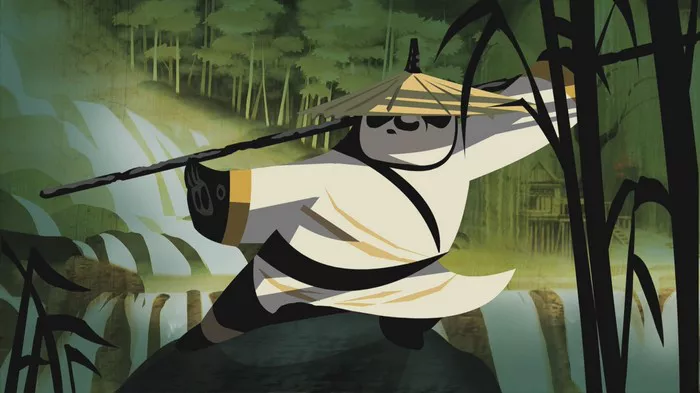The term “kung fu” conjures images of martial arts prowess, discipline, and ancient traditions. Yet, there remains confusion regarding its origins, with many people wondering whether kung fu is Chinese or Japanese in origin. In this article, we delve into the rich history and cultural context of kung fu, examining its origins, development, and influence to shed light on its true heritage.
Unraveling the Mystery: Is Kung Fu Chinese or Japanese?
The question of whether kung fu is Chinese or Japanese is a common one, often fueled by misconceptions and cultural stereotypes. To understand the origins of kung fu, it’s essential to explore its historical context and the cultural landscapes of both China and Japan.
Exploring the Origins of Kung Fu
Kung Fu in China:
Kung fu, also known as “wushu” in Chinese, has its roots deeply embedded in ancient Chinese culture and history. The term “kung fu” translates to “skill” or “achievement” and encompasses a wide range of martial arts disciplines practiced in China.
Ancient Chinese dynasties, such as the Zhou, Qin, and Han dynasties, played pivotal roles in the development and codification of martial arts techniques and philosophies. Martial arts practitioners honed their skills for self-defense, warfare, and spiritual cultivation.
Legendary figures like Bodhidharma, a Buddhist monk credited with introducing martial arts to the Shaolin Temple in the 6th century, further solidified the connection between kung fu and Chinese culture. The Shaolin Temple became renowned as a center for martial arts training and enlightenment.
Kung Fu in Japan:
While kung fu has its origins in China, its influence extended beyond its borders to neighboring countries like Japan. Japanese martial arts, known as “budo,” drew inspiration from Chinese martial arts traditions, including kung fu.
During the Tang Dynasty (618-907 AD), cultural exchanges between China and Japan facilitated the transmission of martial arts knowledge and techniques to Japan. Japanese warriors, scholars, and monks traveled to China to study martial arts and Buddhist teachings, bringing back their knowledge to Japan.
Over time, Japanese martial arts evolved into distinct styles and disciplines, such as karate, judo, and aikido, each with its unique techniques, philosophies, and training methods. While these martial arts share similarities with kung fu, they also reflect Japan’s cultural values and historical development.
The Influence of Kung Fu on Japanese Martial Arts
While kung fu originated in China, its influence has permeated Japanese martial arts in various ways, shaping the development of traditional Japanese martial arts styles and techniques.
Karate: Karate, one of the most popular Japanese martial arts, traces its roots to Okinawa, a Japanese island with a rich cultural heritage and historical ties to China. Okinawan martial artists, influenced by Chinese martial arts, developed karate as a method of self-defense and physical conditioning.
Judo: Judo, meaning “gentle way,” was founded by Jigoro Kano in Japan during the late 19th century. While judo is primarily a Japanese martial art, it incorporates elements of jujitsu, a traditional Japanese martial art influenced by Chinese grappling techniques.
Aikido: Aikido, a modern Japanese martial art developed by Morihei Ueshiba, incorporates principles of harmony, blending, and redirection of energy. While aikido is distinct from kung fu in its philosophy and techniques, it shares a common emphasis on fluidity of movement and effective self-defense.
Dispelling Myths and Misconceptions
Despite the historical and cultural connections between kung fu and Japanese martial arts, misconceptions persist regarding the origins and nature of kung fu. Here are some common myths debunked:
1. Myth: Kung fu is Japanese.
Reality: Kung fu originated in China and has deep roots in Chinese culture, history, and philosophy.
2. Myth: All martial arts are the same.
Reality: While martial arts share common principles and techniques, each martial art has its unique history, philosophy, and cultural context.
3. Myth: Kung fu and karate are interchangeable.
Reality: Kung fu and karate are distinct martial arts with different origins, techniques, and training methods.
Celebrating Cultural Diversity and Heritage
In today’s globalized world, martial arts serve as a testament to the rich diversity of human culture and heritage. Whether practiced in China, Japan, or around the world, martial arts like kung fu and its Japanese counterparts embody centuries of tradition, discipline, and wisdom.
Conclusion
The origins of kung fu trace back to ancient China, where it evolved as a comprehensive system of martial arts encompassing diverse styles, techniques, and philosophies. While kung fu has influenced Japanese martial arts, such as karate, judo, and aikido, it remains rooted in Chinese culture and history. By exploring the historical context and cultural connections between China and Japan, we gain a deeper understanding of the true heritage of kung fu and its enduring legacy in the world of martial arts.

